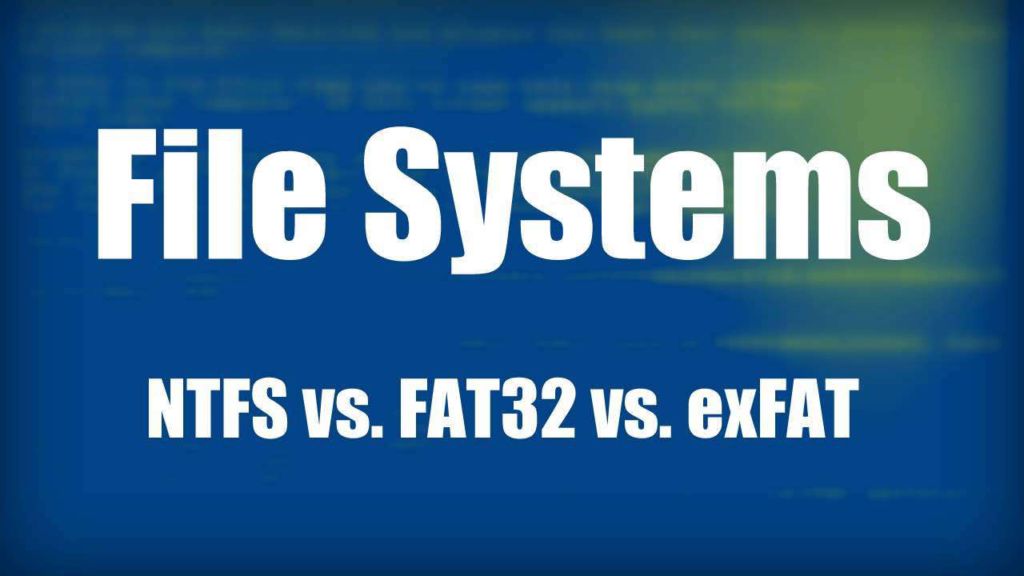
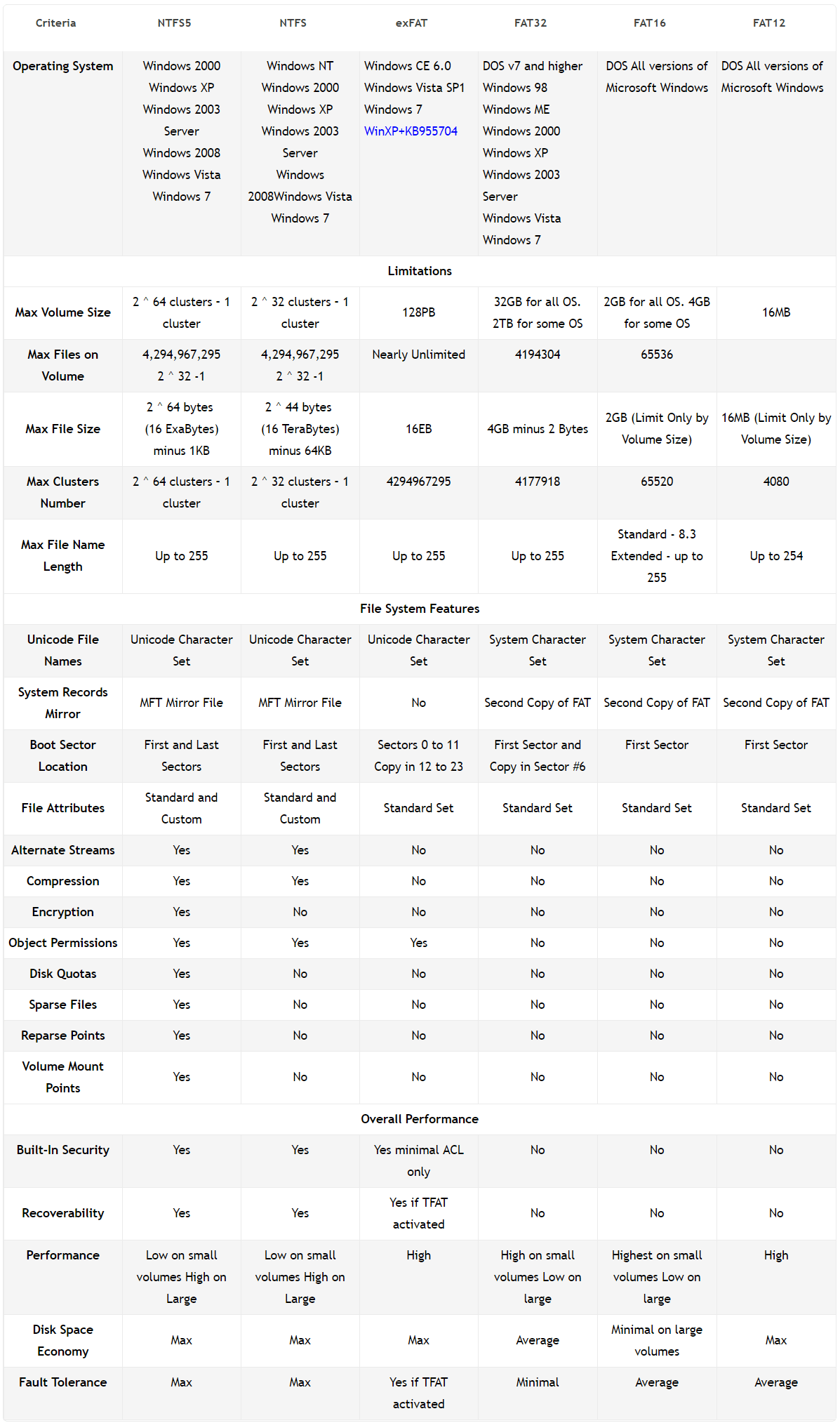
Data Recovery Freeware and Shareware for Windows. Active@ UNDELETE, Active@ File Recovery, Active@ Partition Recovery

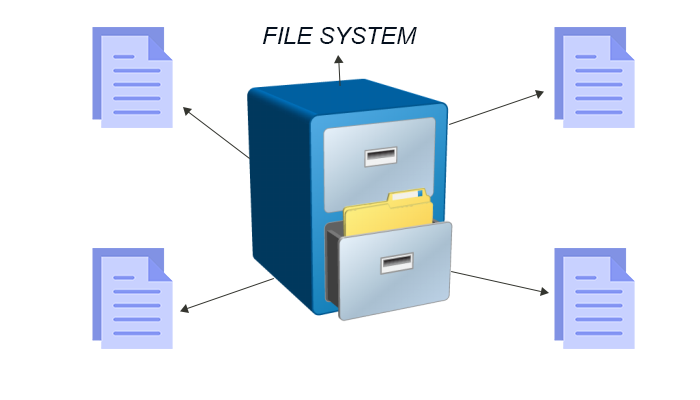
FAT File Systems. FAT32, FAT16, FAT12. The File Allocation Table (FAT) file system is a simple file system originally designed for small disks and simple folder structures.
GT Explains: What is the Difference Between NTFS and FAT 32 File Systems.
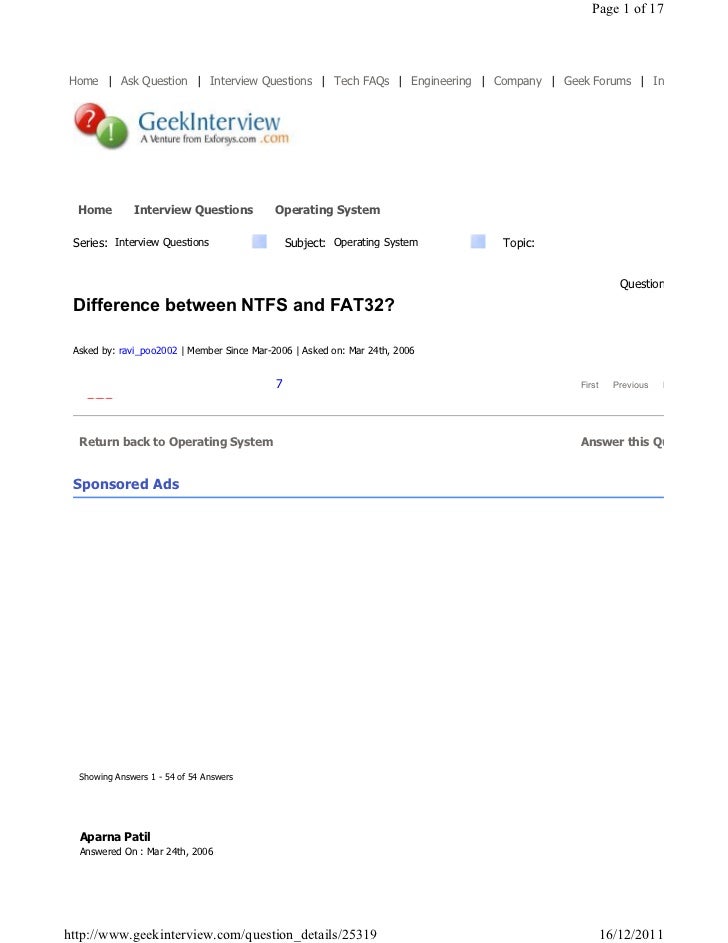

The original FAT file system (or FAT structure, as it was called initially) was designed and coded by Marc McDonald, based on a series of discussions between McDonald and Bill …
Apr 16, 2018 · This article explains the differences between FAT, HPFS, and NTFS under Windows NT, and their advantages and disadvantages. It is …

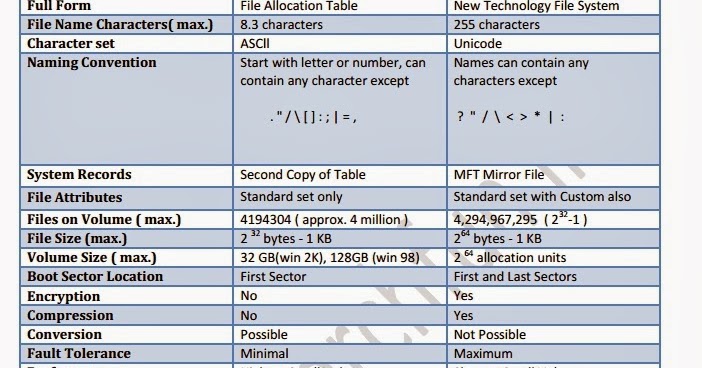
FAT vs FAT32 FAT (File Allocation Table) is a file system used on computers. Its function is to map out which areas of the drive are unused and which areas of …

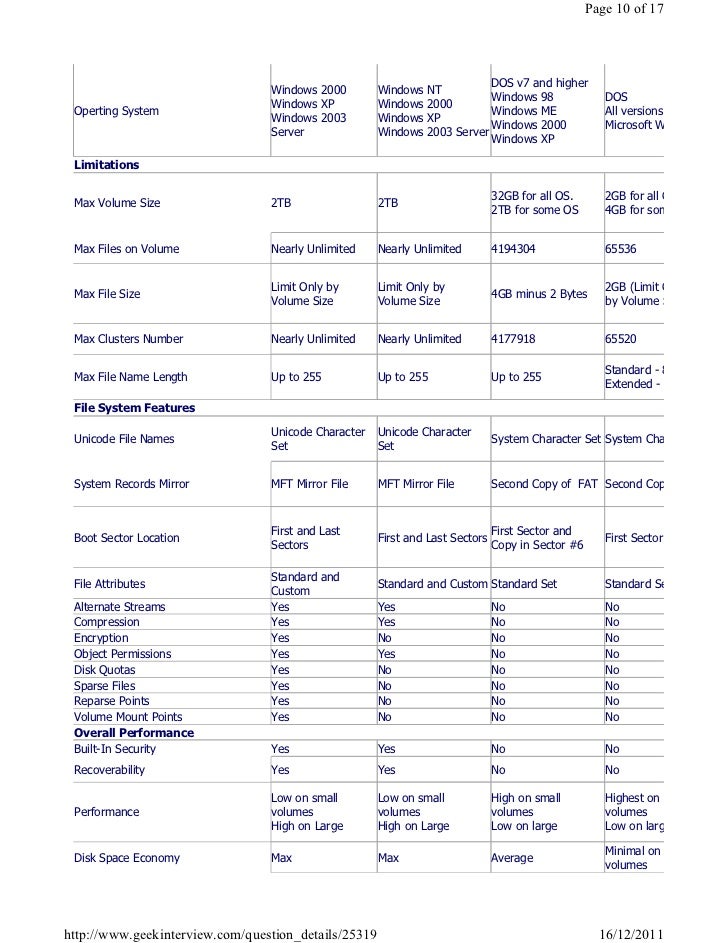
Microsoft introduced the new exFAT file system with Vista SP1. Extended File Allocation Table (exFAT) is the successor to the old FAT32 file system. What are the advanatages and disadvantages to this new file system? What are the differences between exFAT and FAT32? When is exFAT preferred over NTFS
FAT32 and NTFS are file systems and disk standards used for partitioning and formatting the hard drives. If compared, FAT32 is older and simpler version to that of NTFS, which is new and well-featured version of file system.
NTFS (New Technology File System) is a proprietary file system developed by Microsoft. Starting with Windows NT 3.1, it is the default file system of the Windows NT family.. NTFS has several technical improvements over the file systems that it superseded – File Allocation Table (FAT) and High Performance File System (HPFS) – such as
